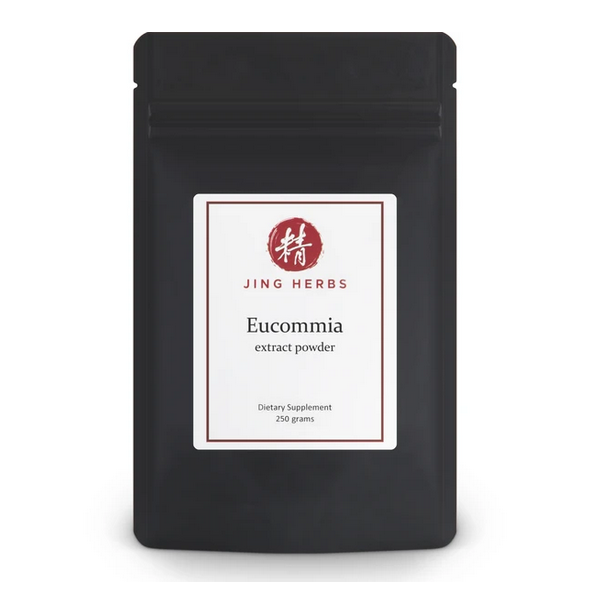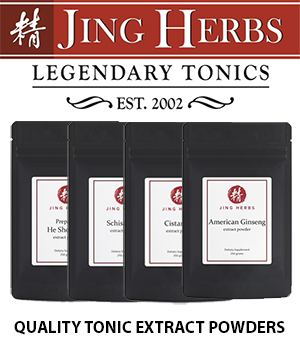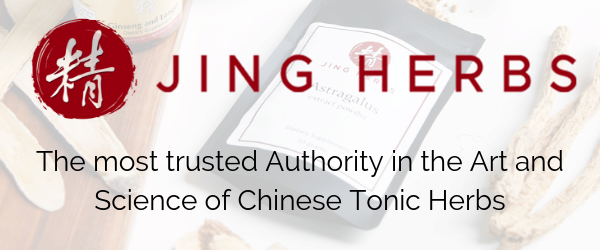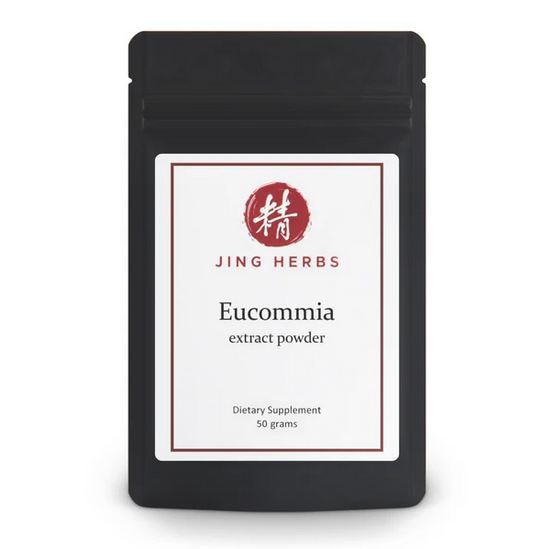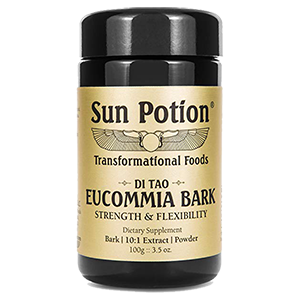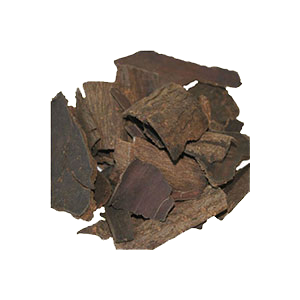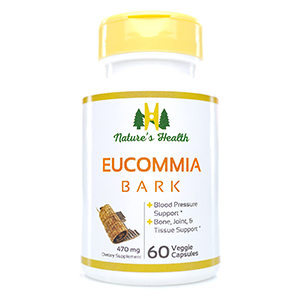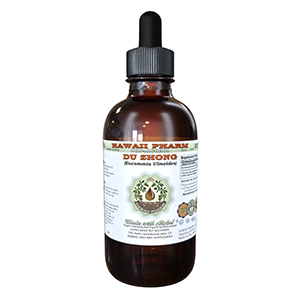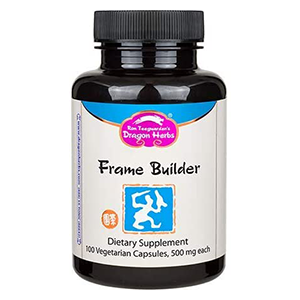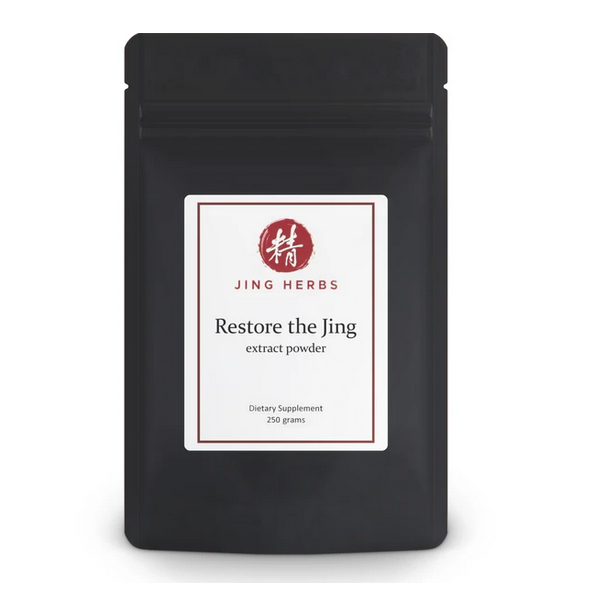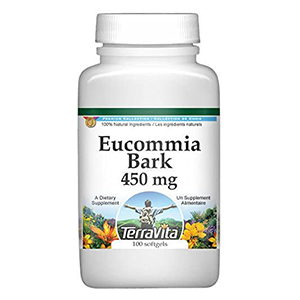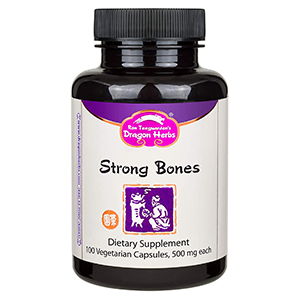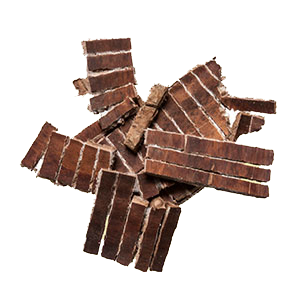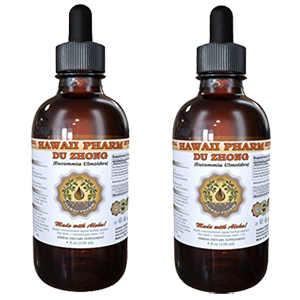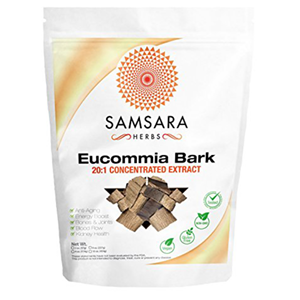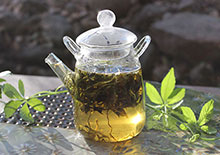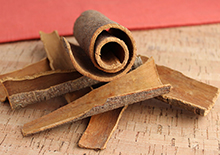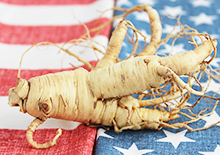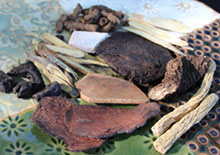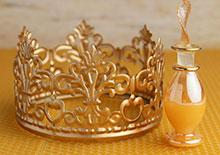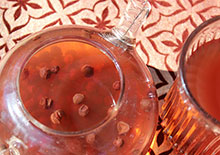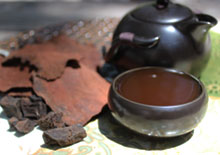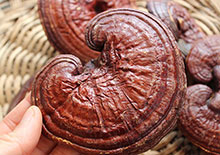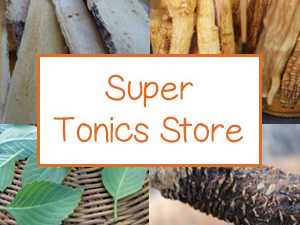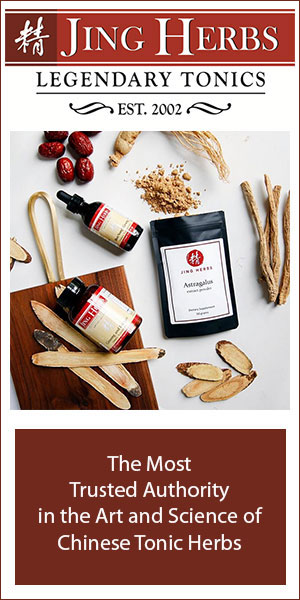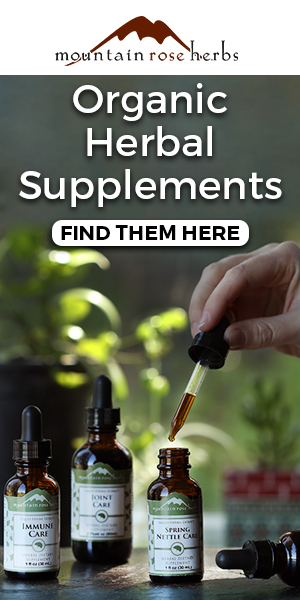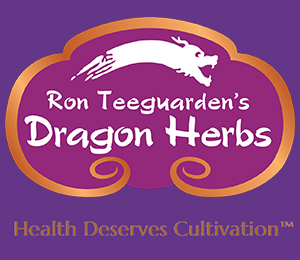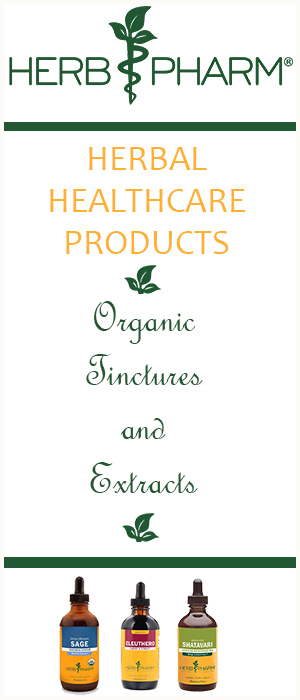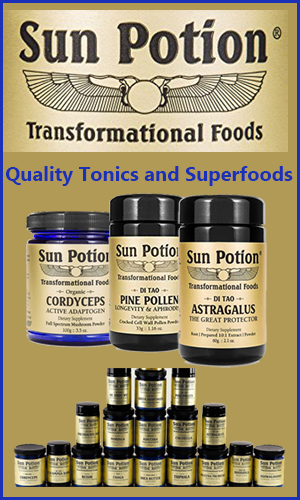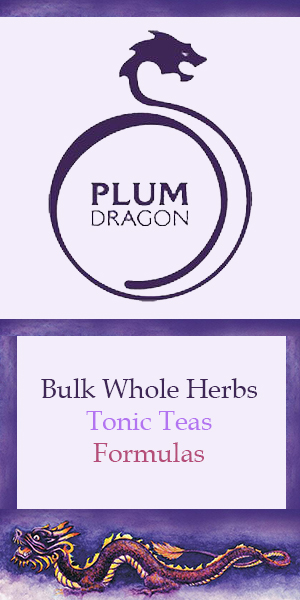- Home
- Chinese Herbs
- Eucommia Bark Benefits
Eucommia Bark Benefits, A Tonic Herb for the Bones and Joints
Intro | Yang Jing Tonic | What is Eucommia? | Harvesting | Health Benefits | Latex Allergies | Types | How to Use | Precautions | Shop
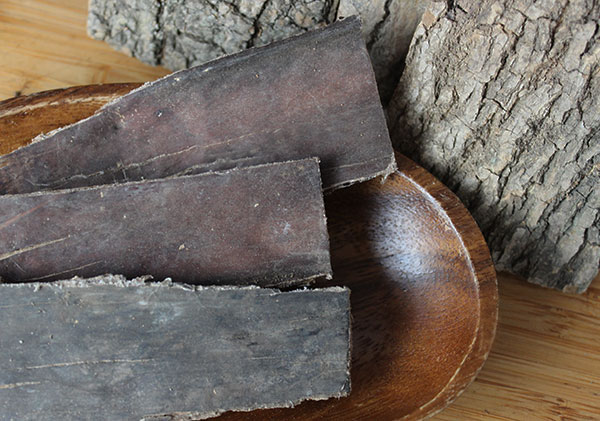
Eucommia bark is a major tonic herb that comes from a small tree native to China, often called the "Chinese rubber tree" because of its latex-bearing qualities. The bark of the tree has been used for many centuries as a decocted tea preparation for its profound effects on increasing the overall strength of the skeletal structure.
A popular herb among athletes, eucommia is known to help improve flexibility and well as increase physical energy. It is used to help fortify the bones, ligaments and tendons and is especially reinforcing to the knees, ankles and back, particularly the lumbar lower spine region.
Table of Contents
Intro | Yang Jing Tonic | What is Eucommia? | Harvesting | Health Benefits | Latex Allergies | Types | How to Use | Precautions | Shop
Although the bark is very a energizing substance, it is not a stimulant per se, but works as an adaptogen to both activate circulation as well as calm the nerves if needed.
Studied and well documented for its blood pressure lowering qualities and actions as an anti-inflammatory agent, eucommia is a great herbal adjunct for the elderly for maintaining bone health, flexibility and structural stability. In some current research the bark extract is also shown to be of benefit to neurological functions and cognitive decline.
A Yang Jing Tonic Herb
Eucommia bark is a highly revered "herb" in Chinese herbalism and was first mentioned over 2,500 years ago in the herbal classic Shennong Ben Cao Jing, listed next to ginseng as a superior tonic herb. In Traditional Chinese Medicine it is viewed as a potent Yang Jing tonic used to support the skeletal, reproductive and endocrine systems.
Jing, one of the three treasures in Traditional Chinese Medicine, is viewed as the primordial life-force energy given to us at the time of our conception and is said to be stored in the kidneys, joints, ligaments, spinal column, neck and brain. As a Yang Jing tonic it has been shown to have positive effects on many of these bodily regions either directly or indirectly.
Working with the kidney and liver organ systems, the teas or hot water extracts are a great supplement for those with symptoms of kidney Yang deficiency, which may include low energy, sensation of coldness, weakness and lethargy. It is sweet, warm and bitterly pungent in nature, which makes it easily absorbed and suitable for most people. Tonifying to kidney Yang functions, it is said to increase mental power and creativity as well as strengthen the will.
Referred to as du zhong in Chinese-English, eucommia is not used medicinally but as a tonic to be used for a prolonged period of time on a consistent basis, ideally in herbal formulations specific to one's health diagnosis and goals. The bark cannot be eaten in its raw state but must go through a hot water extraction process, either by simmering the dried material in water as a liquid tea or by concentrating it into a powdered hot water extract. It can also be prepared as a tincture in alcohol. These preparation techniques are necessary to release the health enhancing compounds for consumption as an herbal supplement.
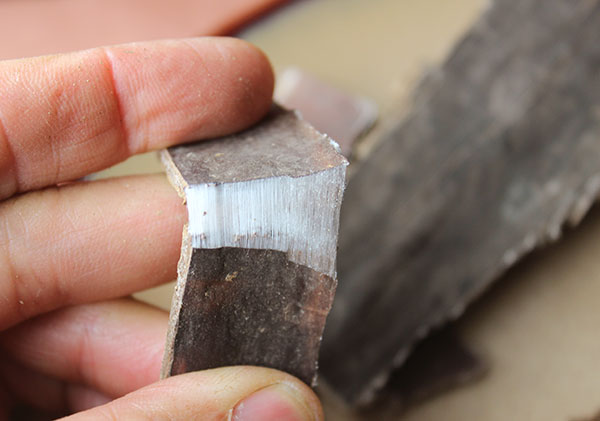
What is Eucommia?
Eucommia is the inner bark layer inside the outer cork bark of the eucommia tree (Eucommia ulmoides) and is typically cut off tree trunks at least 10 years of age. Inside the 1/8 inch thick bark is a natural white latex material with elastic-like qualities that is apparent when the bark pieces are cracked apart. The name eucommia in fact means "good gum" which refers to this rubbery substance, likewise found to some degree in the leaves.
Also called the Chinese rubber tree, the hard gum, gutta-percha, contains between 3-10% latex in the bark. This amount varies depending on the quality it is sourced from. Older trees producing thick bark have a greater percentage of latex.
Native to China, Eucommia ulmoides is the only species in the genus Eucommia and is unique to cold-tolerant temperate climate zones. It is not related to the tropical rubber tree variety, Hevea brasiliensis, and can't be tapped for its latex like other types of rubber trees.
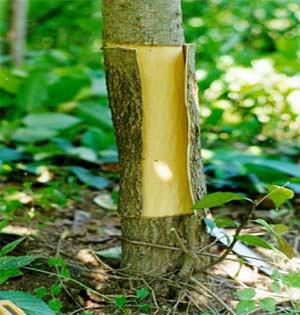
Eucommia is an ancient tree species. Fossil records, between 10-35 million years ago, indicate that Eucommia ulmoides and other eucommia tree species covered a much broader habitat range with some fossil sites found in other locations such as Europe and North America.
The cork cambium bark layer is the primary part of the eucommia tree that is used, but the leaves and seeds are also incorporated into some herbal formulas on a much smaller scale. Eucommia is endangered as a wild species and the only bark consumed today comes from cultivated trees that are mostly grown in China.
The Chinese name for eucommia "du zhong", according to the Bencao Gangmu, the Chinese materia medica written during the Ming Dynasty, makes reference to a man named Du Zhong, who took the tonic and "became enlightened."
Harvesting Eucommia Bark
Eucommia bark, when harvested correctly, grows back with a new layer regenerating itself within a few months. For a quality material the bark is collected from tree trunks that are 10 years or older. During a short 3 month period of time, when the active ingredients are most concentrated, the bark is cut and stripped off in segments. It is then folded together with the inner bark surfaces touching and stored for a few days until it turns a dark brown-black color.
After sun-drying, the coarsely textured outer bark layer is usually removed. Eucommia is often sold in strips that have been cut with uniform lines to expose the quality of the latex material for marketing purposes.
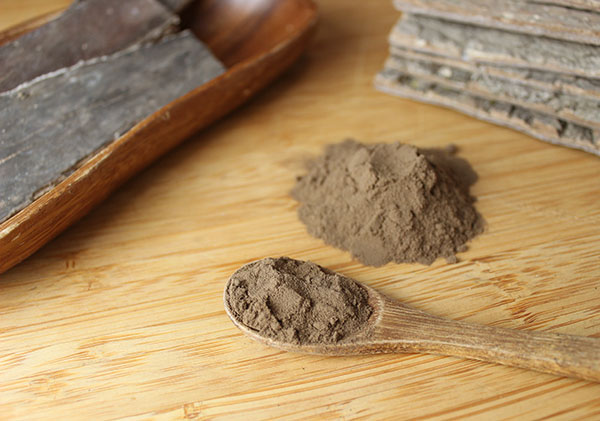
Eucommia Bark Benefits
1) Strengthens the Bones and Joints
2) Helpful Tonic for Osteoarthritis and Osteoporosis
3) Eucommia Bark and Neuroprotective Activities
4) Support for High Blood Pressure
5) An Energizing Sexual Tonic
6) Potential Influence for a Fatty Liver
Strengthens the Bones and Joints
Eucommia has long been used in Traditional Chinese Medicine as a treatment for different types of arthritis and bone injuries. This is in part due to its qualities as a Jing tonic, beneficial for increasing the pliability and elasticity of the joints, ligaments and muscle tissue. It is a commonly used ingredient along with other tonics like morinda, bupleurum, peony, cistanche, licorice root, goji and atractylodes. Often, eucommia seed is also included in preparations as it exhibits similar properties to the bark but also contains calcium which helps to support healthy bones.
The bark is a source of latex, the key active ingredient. When it is cracked and separated, thick flexible latex threads hold the bark together making it hard to tear apart. Being noticeably elastic in nature, this substance, following the doctrine of signatures, likewise promotes strength in the connective tissues when consumed.
Eucommia tonic teas and extracts are supplemental to the kidneys as well as the liver, both organ systems which work together to produce similar effects on the skeletal structure. The customary phrase in TCM is, "When the liver is replenished, the sinews become strong and when the kidneys are replenished, the bones will become hard."
Eucommia is a top tonic herb supplement used among athletes as well as yoga and martial art practitioners, providing flexibility in the joints, hip and back. It is additionally supportive to bodybuilders and perfect for intense physical workout regimens that require greater structural integrity and elasticity. Eucommia bark benefits for increasing athletic performance are especially enhanced when used with other herbs like cordyceps and schizandra.
As the perfect dietary adjunct for joint injuries or bone fractures, the bark is especially suitable in such cases of damage, stress or trauma to these regions of the body. In a 2015 published study on Eucommia ulmoides in the Journal of Psychotherapy, research results showed that extracts "significantly increased longitudinal bone growth rate and growth plate height in adolescent female rats."
It has been traditionally used to help with pain, swelling and weakness in the joints, however it is not a medicinal remedy per se. It works as a tonic to be taken daily for optimal results. It is generally best to take eucommia as a preventative supplement to nourish and maintain healthy bones and joints before problems develop.
Eucommia should furthermore be consumed in addition to a health promoting diet and regular exercise program that incorporates mild weight bearing workouts, known to help increase and sustain bone strength and density.
Some of the primary compounds in the bark which contribute to its tonifying properties include various iridoid and lignan glycosides. The constituent aucubin, is a main iridoid glycoside present in the herb along with other phytochemicals such as encommiol, encommioside, pinoresinol diglucoside, flavonoids and tannins.
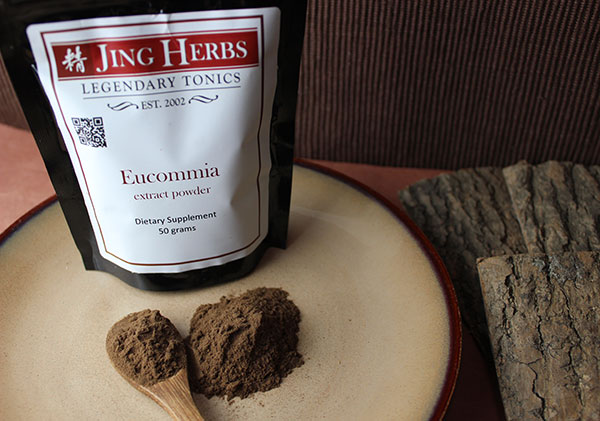
Helpful Tonic Herb for Osteoarthritis and Osteoporosis
Eucommia, in many cases, can be used as a nutritional tonic for the elderly to ensure healthy cartilage and to guard against conditions like arthritis. Osteoarthritis is one of the most common forms of arthritis affecting millions of individuals worldwide. It is a degenerative disease that causes pain, stiffness and impaired joint, hand, knee and spine functions. It occurs from the wearing down of the protective cartilage on the end of bones as we age and is largely influenced by dietary and lifestyle habits.
In a study published in 2013 in the Journal of Experimental and Therapeutic Medicine, "Eucommia was demonstrated to have a cartilage-protecting effect in rats with osteoarthritis, potentially by improving cartilage metabolism, regulating the degradation of the extracellular matrix of the articular cartilage, and inhibiting apoptosis in chondrocytes, thereby slowing down joint degeneration."
It is especially beneficial for post-menopausal women as a health enhancing tonic for preventing conditions like osteoporosis and helps to nourish weak or brittle bones. After menopause women are more susceptible to bone loss because of decreased amounts of estrogen in the body.
In a study published in 2014 in The American Journal of Chinese Medicine, an extract of du zhong (eucommia) was shown to be a useful "alternative therapy for the prevention of disuse-induced osteoporosis" through its ability to regulate bone metabolism.
In another study, eucommia's total lignan content was identified as the constituent responsible for its effectiveness in suppressing the loss of bone mass in vivo and in vitro research.
Eucommia Bark Benefits Exhibit Neuroprotective Activities
In Chinese herbalism, the brain and its functions are closely related with the kidney system and Jing herbs, like eucommia, also work to nourish cognitive capacities. The bark extracts or teas are also favorable as a general tonic for the central nervous system, useful for alleviating stress and anxiety as well as protecting against adrenal fatigue.
Current scientific research has shown that eucommia prevents and/or decreases amyloid ß-induced neuronal cytotoxicity and is noted, as a result, to improve learning and memory skills. It has also been known to protect neuronal cells from apoptosis induced by Parkinson's-related neurotoxins. In a 2015 study Eucommia ulmoides was shown to have neuroprotective effects helpful as a complementary treatment for Parkinson's disease due to its ability to improve the ubiquitin-proteasome system, which may contribute to the prevention of neurodegeneration.
Two derivatives in eucommia, iridoid and catechol, also display
effectiveness as anti-inflammatory agents that help to protect against
neuroinflammation, a key factor in neurodegenerative conditions. Du zhong, for this reason, is a commonly used tonic therapy for strokes in China. (Source)
In another study published in the Journal of Biomolecules and Therapeutics, Eucommia ulmoides extracts (EUE) demonstrated inhibitory effects on cognitive decline, memory and learning deficits. The study concluded that the "neuroprotective actions of EUE may potentially be applied in the treatment of neurodegenerative diseases such as Alzheimer's."
Support for High Blood Pressure
Widely used in Traditional Chinese Medicine to treat hypertension or high blood pressure, eucommia bark benefits were shown in clinical trials to possess blood pressure lowering properties with beta-adrenergic blocking activity that naturally helps to dilate the blood vessels.
One of the main antihypertensive compounds found in eucommia is pinoresinol diglucoside, a lignan also found in sesame, cruciferous vegetables and olive oil. (Source)
Aucubin and the other iridoids of eucommia are also believed to be key phytonutrients responsible for its anti-inflammatory effects, attained by inhibiting the arachidonic acid pathway. This may partly explain its use in treatment of arthritis. The tonic herb rehmannia also contains the active iridoid glycoside constituents, including aucubin, and is often used with eucommia in formulas specific for joint pain.
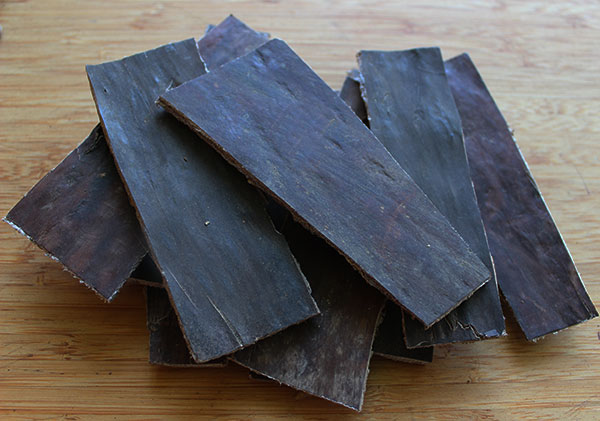
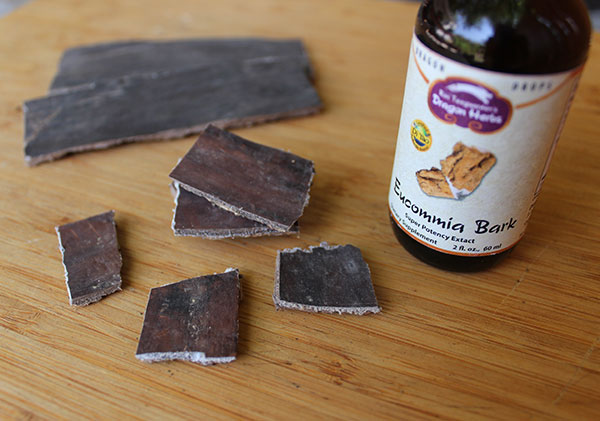
An Energizing Sexual Tonic
Most major Chinese tonics, especially Yang and Yin Jing herbs, are very stimulating to the sex glands and organs. They help to increase sexual libido, normalize sex functions and are naturally energizing on a physical level.
In TCM, eucommia bark is used for a number of pregnancy-related conditions. It is known to both "calm a restless fetus"and to prevent threatened miscarriages.
Potential Influence for a Fatty Liver
In several current studies, eucommia bark extracts have demonstrated effectiveness for non-alcoholic fatty liver disease, caused primarily by obesity or type II diabetes. Both the active compounds geniposide and aucubin in eucommia are found to "enhance lysosomal activity and regulate lysosomal BAX translocation, leading to resistance against hepatic lipotoxicity. Eucommia ulmoides extract appears to be a viable treatment strategy to prevent or treat non-alcoholic fatty liver disease (NAFL) and its associated toxic conditions." (Source)
Can Latex Cause an Allergic Reaction?
Latex, an allergen well-known in other rubber tree species, can cause contact dermatitis upon repeated exposure for individuals allergic to it. However, this is rarely the case when orally ingested. Many people with latex allergies are able to consume eucommia tonics without any adverse side-effects and there are currently no reported cases of latex allergies occurring from the consumption of eucommia bark as an extract, tea or tincture.
Just as a precautionary measure, we would recommend that people with hypersensitivity to latex take the herb in small doses and increase the amount over time once you know there are no unwanted reactions.
Types of Eucommia Bark
- Whole Bark - This is the whole plant material, usually sold in larger pieces to prevent the drying out of the latex substance. It can be broken apart and used in tea decoctions.
- Eucommia Powdered Extracts - These are hot water extracts that are concentrated into powder for use as a bulk powder, capsule or tablet.
- Herbal Formulations - These are herbal preparations using eucommia bark benefits as either the primary or secondary ingredient.
- Tinctured Extracts - A liquid solution created by extracting eucommia bark in alcohol to concentrate its active compounds.
Favorite Eucommia Products
Our two favorite companies featuring high quality eucommia products are Dragon Herbs and Jing Herbs. Dragon
Herbs offers a tinctured alcohol extract of eucommia called Eucommia
Drops and also includes eucommia as an ingredient in their bone building
formulas. Jing Herbs has a powdered hot water extract of eucommia that
is sold in bulk to be spooned into drinks and teas. They also have an herbal preparation called Restore the Jing which includes eucommia as a primary herb.
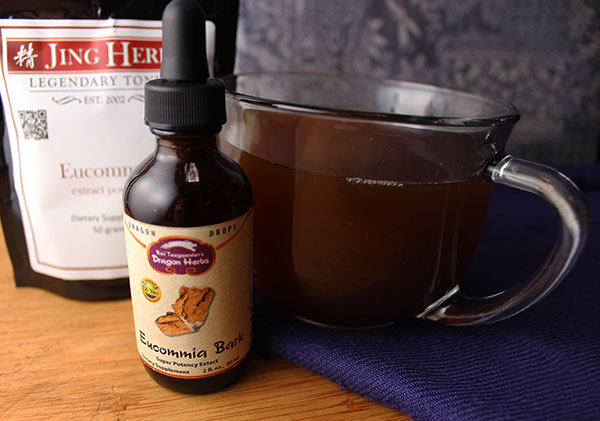
How to Use
Eucommia bark benefits, like other tonic herbs, are best and most effective when they have been simmered in water or tinctured in alcohol. The herb can be used alone, but is often combined with any number of other herbs or even Ayurvedic rasayanas. It is commonly found in many patent herbal formulations, in smaller amounts or as a primary ingredient, depending on the purpose.
It is ideally used in specific preparations created according to the unique health issues and constitution of the individual being treated. As a mildly warming and sweet Yang herb, it is often combined with other Jing herbs, like he shou wu or rehmannia to counteract their cooling nature and activate their constituents. It can be used in herbal tea recipes designed to build kidney Yang, nourish kidney yin and to increase sexual libido.
The whole bark pieces can be broken apart and decocted in water for 20 minutes or longer, alone or with other herbs. The bark can also be used to create an alcohol-based tincture, which is an excellent way to extract many of the beneficial components.
It has a pleasantly sweet, mildly bitter and earthy taste. It surprisingly works well as an ingredient in some raw dessert recipes, like our vegan pecan pie.
Eucommia Dosage
Eucommia is more effective when divided into 2 doses and consumed twice a day. It is best taken in the morning or afternoon as it is an energy tonic.
- 1/4t-3t powdered extract
- 3-12 droppers liquid extract
- 6 to 9 grams bark pieces in a one quart tea decoction
Precautions:
There are no known side effects of eucommia bark, however, since the bark contains latex, people with latex allergies should proceed with caution. Although there are no known cases of a eucommia allergy to someone sensitive to latex, the possibility may exist. It should be temporarily avoided in cases of extreme yin deficiency or weakness as it may be too drying.
Shop Related Products (About Affiliates & Amazon Associate Paid Links)
Affiliate Disclaimer: This section contains affiliate product links. If you make a purchase through our recommended links, we receive a small commission at no additional cost to you. Thanks for the support.

